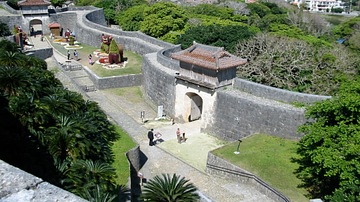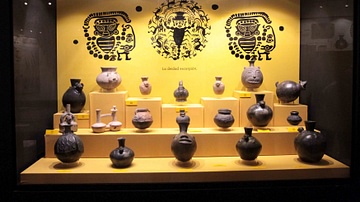With the dust of history settled upon the annals of warfare, one particular engagement stands as a testament to the complexities and enigmatic nature of military encounters. The Battle of Carrhae in 53 BCE, an event shrouded in ambivalence, offers a captivating glimpse into the intricacies that define armed conflicts. This pivotal clash between Roman legions under Crassus and Parthian forces led by Surena defies conventional narratives, demanding an exploration beyond surface-level interpretations.
An Unforeseen Quandary: The Prelude to Conflict
In this fateful encounter on Mesopotamian soil, both sides found themselves entangled within a web spun by their own ambitions. Crassus sought glory and political leverage for his triumvirate with Caesar and Pompey while aiming to expand Rome’s dominion eastward. Meanwhile, Surena aimed to assert Parthia’s strength against its formidable western neighbor while securing his own position within the empire’s intricate power dynamics.
As these two forces converged near Carrhae (modern-day Harran), their motivations intertwined with trepidation and uncertainty. Diplomatic overtures were exchanged but failed to quell mounting tensions fueled by mutual suspicion. Thus began a battle that would forever alter the course of history.
A Clash of Tactics: The Struggle for Dominance
The battlefield became an arena where divergent strategies clashed amidst swirling sands and piercing sunrays. Crassus relied heavily on traditional Roman infantry tactics honed through years spent conquering vast territories across Europe; however, he underestimated Parthia’s mastery in mounted archery—a skill unparalleled among ancient civilizations.
Surena capitalized on this advantage, employing swift and relentless cavalry charges that showered the Roman ranks with a hail of arrows. The Parthian horse archers, renowned for their unparalleled accuracy and mobility, inflicted significant casualties upon the Roman legions while evading direct confrontation.
Crassus’s forces found themselves ensnared in an unfamiliar quagmire—a situation where conventional military doctrine proved futile against an elusive enemy. The Romans’ heavy infantry formations were rendered ineffective as they struggled to adapt to this unorthodox style of warfare.
The Aftermath: A Tale of Consequences
As dusk settled over the blood-soaked battlefield, Carrhae bore witness to a decisive victory for Surena and his Parthian forces. Crassus himself met a tragic end—captured during ill-fated negotiations and subsequently executed by his captors. This defeat not only shattered Rome’s eastern ambitions but also sent shockwaves throughout the empire, exposing its vulnerabilities beyond its European borders.
The Battle of Carrhae serves as a stark reminder that military encounters are rarely defined by clear-cut victories or defeats. Instead, they often exist within shades of ambiguity—where strategic miscalculations intertwine with unforeseen circumstances to shape destinies on both sides of the conflict.
Ambivalence Amidst History’s Tapestry
In conclusion, the Battle of Carrhae stands as an enduring testament to humanity’s perpetual struggle for dominance amidst shifting sands—an encounter marked by ambivalence and consequences that reverberate through time. It is through such enigmatic clashes that we gain insights into our own limitations while unraveling the intricate tapestry woven by history itself.











